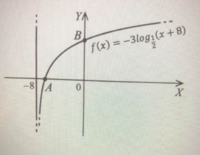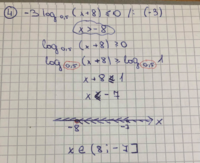Google says logarithm is a branch of Algebra, so I am seeking for help here 
There is a task: a function is given, I have to find with what meanings of x f(x)≤0. Actually, there is a graph
is given, I have to find with what meanings of x f(x)≤0. Actually, there is a graph  given, but the task says find meanings of x not using this graph.
given, but the task says find meanings of x not using this graph.
My solution: I though that if I will write I will get x meanings, when the initial function is ≤0, but for ex.: if x=5, the meaning isn't ≤.
I will get x meanings, when the initial function is ≤0, but for ex.: if x=5, the meaning isn't ≤.
Could you, please, explain steps of solution?
There is a task: a function
 is given, I have to find with what meanings of x f(x)≤0. Actually, there is a graph
is given, I have to find with what meanings of x f(x)≤0. Actually, there is a graph  given, but the task says find meanings of x not using this graph.
given, but the task says find meanings of x not using this graph.My solution: I though that if I will write
 I will get x meanings, when the initial function is ≤0, but for ex.: if x=5, the meaning isn't ≤.
I will get x meanings, when the initial function is ≤0, but for ex.: if x=5, the meaning isn't ≤.Could you, please, explain steps of solution?
